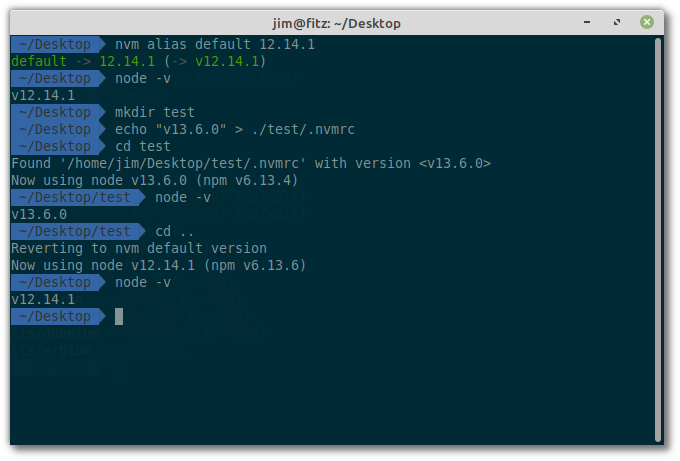

To confirm if the installation was successful, you can run the following command: command -v nvm This way, you can make changes to your bash profile, allowing you to access nvm system-wide. With these commands, you can clone the repository to ~/.nvm. So, you’ll need to check the latest version before installing it on your machine. The above commands assume that you’re installing nvm version 0.35.3. To install it on macOS or Linux, you can use either Wget or cURL.įor Wget, run the following command on the terminal: wget -qO- https: ///nvm-sh/nvm/v0.35.3/install.sh | bashįor cURL, run the following: curl -o- https: ///nvm-sh/nvm/v0.35.3/install.sh | bash Nvm is a script-based version manager for Node.js. On macOS or Linux, you can use either of the following Node version managers: You can also use it to update your version of Node.js. Updating using a Node version manager on macOS or LinuxĪ Node version manager is a utility that lets you install different Node.js versions and switch flawlessly between them on your machine. Let’s now talk about the different ways on how to update Node.js.ġ. Then simply this simply allows you to switch your Node versions, also the ability to use install commands.There is an easier way to upgrade Node.js Versions Checking your version of Node.jsīefore getting started, you can check the version of Node.js currently deployed on your system by running the following command on the terminal: node –version


Nvm ls List versions (installed versions are blue)Ī simple install by downloading and running the nvm-setup.zip. It allows you to easily install and manage multiple versions of node. The Node Version Manager. You can find it at Upon this realisation, I completed a quick search and stumbled across a useful tool that can be installed on your Windows machine: The project I was working on required me to update my version of Node.js a pretty straightforward process, until I then returned to an older project that was dependent on an earlier version of Node. Today I’m going to be exploring how to manage multiple installations of Node.js on a windows computer following an issue I recently came across whilst working on a project.


 0 kommentar(er)
0 kommentar(er)
